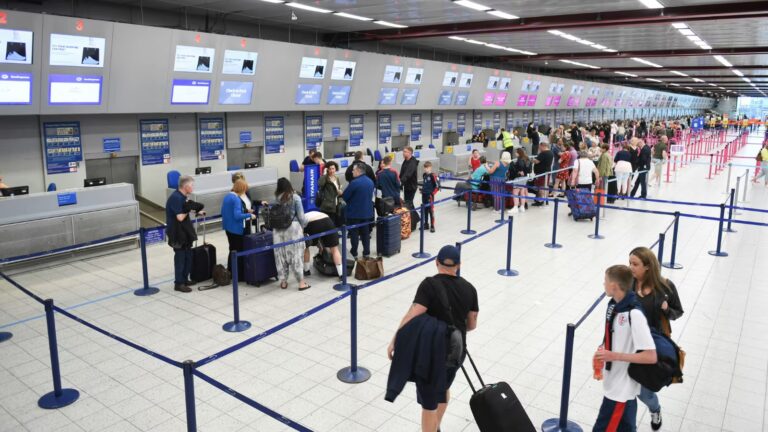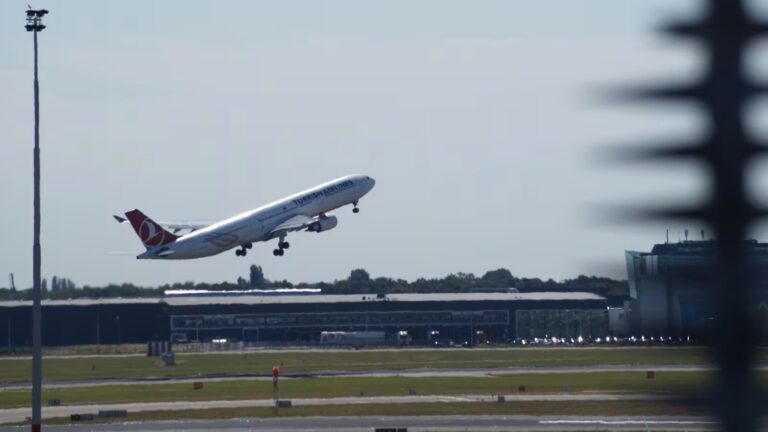As the aviation industry strives to meet ambitious net-zero targets by 2050, airports play a crucial role in driving sustainability. With increasing pressure to reduce carbon footprints, many airports are already leading the way with innovative green strategies.
Here are five key sustainable initiatives that airports worldwide can implement by 2026 to accelerate their journey toward net-zero emissions.
1. Transition to 100% Renewable Energy
One of the most impactful ways airports can cut emissions is by switching to renewable energy sources such as solar, wind, and geothermal power.
- Delhi International Airport already operates on 100% renewable energy, thanks to its 7.8MW solar PV system.
- Cochin Airport in India became the world’s first fully solar-powered airport, setting a benchmark for others.
- Denver International Airport hosts one of the largest airport solar energy programs, including solar arrays and community solar gardens.
By investing in on-site solar farms, power purchase agreements (PPAs), and wind energy contracts, airports can significantly reduce Scope 2 emissions (indirect emissions from purchased electricity).
2. Electrify Ground Operations & Fleets
Replacing fossil-fuel-powered ground support equipment (GSE) and vehicles with electric alternatives can drastically cut emissions.
- Amsterdam Schiphol Airport plans to transition all airside vehicles to electric by 2030 and is already testing autonomous electric baggage robots (COBROs).
- Delhi Airport has replaced 90% of its airside vehicles with EVs, reducing emissions by 1,000 tonnes annually.
- Heathrow Airport aims for a 100% zero-emission fleet by 2030, with 17% already converted.
Installing high-voltage charging stations and incentivizing airlines and service providers to adopt electric GSE will be critical by 2026.
3. Enhance Sustainable Aviation Fuel (SAF) Infrastructure
SAF can reduce lifecycle emissions by up to 80% compared to conventional jet fuel. Airports can accelerate adoption by:
- Creating SAF Incentive Programs: Heathrow’s SAF incentive covers 50% of the extra fuel cost for airlines, targeting 11% SAF usage by 2030.
- Partnering with Fuel Producers: India’s Bio-ATF Programme Committee is exploring SAF production to support airlines.
- Developing On-Site SAF Storage: Airports can collaborate with fuel suppliers to ensure SAF availability for departing flights.
The ICAO’s recent push for SAF certification pathways further supports this transition.
4. Implement Smart Air Traffic & Operational Efficiency Measures
Optimizing flight paths and ground operations reduces fuel burn and emissions.
- Continuous Descent Operations (CDOs): Smoother descents minimize fuel use and noise pollution.
- Airport Collaborative Decision Making (A-CDM): Various airports uses this system to reduce taxiing delays, cutting fuel consumption.
Investing in AI-driven air traffic management and real-time data analytics can further enhance efficiency by 2026.
5. Adopt Circular Economy & Zero-Waste Strategies
Airports generate massive waste, but circular economy approaches can turn this into an opportunity.
- Schiphol Airport aims for zero waste by 2030, with circular building designs and advanced recycling programs.
- Delhi Airport banned single-use plastics and installed 350+ rainwater harvesting systems.
- Denver Airport’s composting program collects 20 tonnes of waste monthly 1.
Key steps include:
- Waste-to-Energy Plants – Converting non-recyclable waste into power.
- Sustainable Concessions – Encouraging food vendors to use biodegradable packaging.
- Water Recycling – Using treated wastewater for non-potable purposes.
Conclusion
Achieving net-zero requires collaboration between airports, airlines, governments, and technology providers. Initiatives like ACI’s Airport Carbon Accreditation program and ICAO’s 2050 Net-Zero Goal provide frameworks for progress.
By prioritizing renewable energy, electrification, SAF, operational efficiency, and waste reduction, airports can make significant strides by 2026—paving the way for a greener aviation future.
Would you like a deeper dive into any of these strategies? Let me know in the comments!



